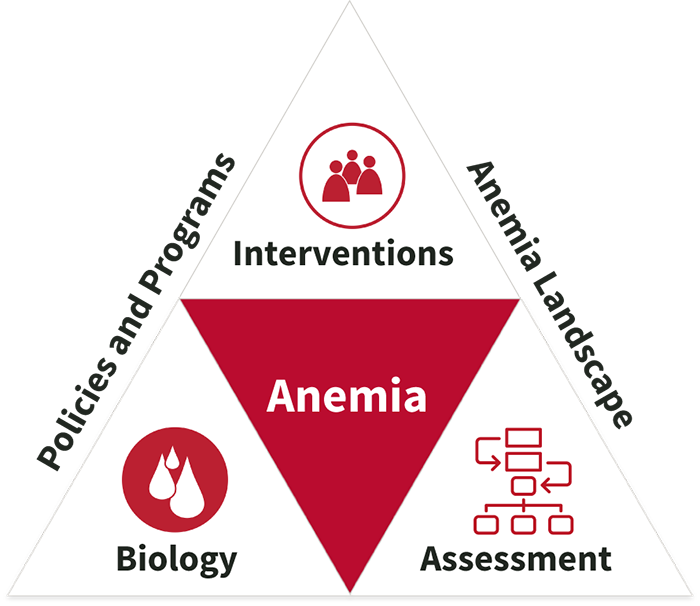Anemia is a public health concern disproportionately affecting young children, pregnant women, and women of reproductive age. The Global Burden of Disease Study estimates that iron deficiency anemia and thalassemia are the leading anemia causes worldwide.
While anemia is prevalent around the world, the underlying causes differ among different populations and regions. A “one size fits all” approach does not exist, and implementation of strategies to reduce anemia depend on the main causes of anemia, and the financial and technical capacity of each country.
We found 93 resource(s)
Comparing Hemoglobin Distributions Between Population-Based Surveys Matched by Country and Time
Journal Article published by BMC Public Health in
This study compares hemoglobin distributions from four pairs of nationally representative surveys measuring hemoglobin, matched by country and time from the Demographic and Health Survey Program and the Biomarkers Reflecting Inflammation and Nutritional Determinants of Anemia project.
Predictors of Anaemia Among Adolescent Schoolchildren of Ghana
Journal Article published by J Nutr Sci in
This study identifies factors associated with hemoglobin concentration and anaemia among school-attending adolescent girls and boys from 115 schools across the various regions of Ghana.
Barriers to and Facilitators of Iron and Folic Acid Supplementation Within a School-Based Integrated Nutrition and Health Promotion Program Among Ghanaian Adolescent Girls
Journal Article published by Curr Dev Nutr in
This study describes the barriers to and facilitators of program fidelity to a school-based anemia reduction program with weekly iron and folic acid supplementation among adolescent girls in Ghana.
An Integrated Infant and Young Child Feeding and Micronutrient Powder Intervention Does Not Affect Anemia, Iron Status, or Vitamin A Status among Children Aged 12–23 Months in Eastern Uganda
Journal Article published by Journal of Nutrition in
This study evaluated the impact of an integrated infant and young child feeding and micronutrient powder intervention on anemia and micronutrient status among children aged 12–23 months in Eastern Uganda.
Age, Ethnicity, Glucose-6-Phosphate Dehydrogenase Deficiency, Micronutrient Powder Intake, and Biomarkers of Micronutrient Status, Infection, and Inflammation are Associated with Anemia Among Children 6–59 Months in Nepal
Journal Article published by Journal of Nutrition in
This study used cross-sectional data from the 2016 Nepal National Micronutrient Status Survey to evaluate factors associated with anemia in a nationally representative, population-based sample of children 6–59 months.
Iron Supplementation in Infants: A Reflection on Hepcidin and Fractional Iron Absorption
Journal Article published by Am J Clin Nutr in
This editorial discusses the implications of a study that assesses the effect of iron dosing schedules on plasma hepcidin and iron absorption in high-risk infants in Kenya and found that iron absorption administered in a variety of methods in a pediatric population and found that less frequent dosing results in increased fractional absorption of…
The Effect of Iron Dosing Schedules on Plasma Hepcidin and Iron Absorption in Kenyan Infants
Journal Article published by Am J Clin Nutr in
This study assessed iron uptake in infants in Kenya who received three different regimens of iron supplementations via stable iron isotopes. The authors report that 12 mg doses of ferrous sulfate given in fortified meals as either morning or afternoon doses resulted in comparable absorption, while dosing of the same form of iron on consecutive…
The Co-Occurrence of Overweight and Micronutrient Deficiencies or Anemia Among Women of Reproductive Age In Malawi
Journal Article published by Journal of Nutrition in
Using data from nonpregnant women aged 15–49 years in the 2015–2016 Malawi Micronutrient Survey, this paper described the prevalence of double burden pf malnutrition (overweight and obesity, and anemia) among Malawian women



